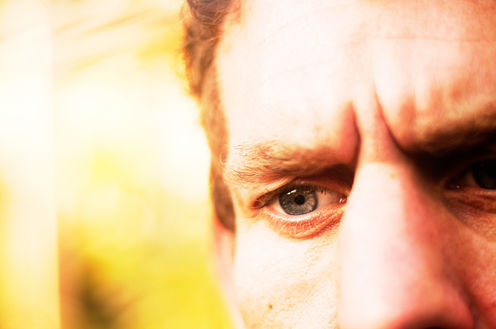
Australians have come a long way in understanding depression. Most recognise the symptoms and believe in the value of professional help.
But anxiety disorders have been left behind. National surveys of “mental health literacy” show Australians are far less likely to recognise symptoms of anxiety.
Around 15% of Australians suffer an anxiety disorder in any given year. This includes generalised anxiety disorder, post-traumatic stress disorder (PTSD), social phobia, panic disorder and obsessive-compulsive disorder.
When given a description of a person who is depressed, around three-quarters of survey respondents recognise the person is “depressed”. With PTSD, only a third get the label correct. For social phobia, it’s less than one in ten.
Australians are also less likely to see a person with an anxiety disorder as warranting professional help.
Everyday worry
One reason for lack of understanding is that anxiety is something everyone experiences. And it’s not always a bad thing. Anxiety is necessary for our survival, because it protects us from danger. It can also motivate us to improve our performance in situations such as exams, sporting competitions and public speaking.
But, like many good things, it is possible to have too much. When the anxiety is intense, lasting and interferes with a person’s life, then it becomes an anxiety disorder.
However, there is no clear boundary between everyday anxiety and anxiety disorders. They lie along a continuum, just like obesity is at the high end of body size and hypertension at the high end of blood pressure.
Not a weakness
Because we all experience anxiety and manage OK with it most of the time, it’s easy to judge people with anxiety disorders as weak. Almost half (45%) of Australians believe “weakness of character” is a likely cause of someone developing severe social anxiety.
But imagine feeling like a semi-trailer is going to run over you when you are crossing the road. Or you’re working in bomb disposal and have to defuse a device that could explode at any time. That is what it can be like for a person with an anxiety disorder, even though there is no semi-trailer and no bomb.
Extreme anxiety can cause physical symptoms, such as pounding heart, chest pain, sensations of choking, sweating and shaking. For a person having a panic attack, which involves anxiety at its most extreme, it can feel like they are going to die.
Given that extremes of anxiety can be so unpleasant, it’s not surprising that people with anxiety disorders will often rearrange their lives to avoid these experiences. This is when anxiety changes from being a help to a major hindrance.
People may avoid driving alone, leaving the house, talking in front of a group or many other everyday activities. Their lives become restricted by the anxiety and the fear of terrifying panic attacks. At this point, we would call it an “anxiety disorder”.
Rather than being a weakness, to confront certain everyday situations can be an act of great bravery. For a person with an anxiety disorder, it is the equivalent of being that bomb disposal expert.
Treatment options
A range of psychological, medical and lifestyle treatments can effectively treat various anxiety disorders. Treatments need to be tailored to the person’s particular type of anxiety disorder and will usually involve a commitment over several months.
The best all-round approach is cognitive behaviour therapy. This involves working with a therapist to look for patterns of thinking and acting that are contributing to problems with anxiety. Once these patterns are recognised, the person learns to use different approaches to thinking and acting that reduce anxiety and improve coping.
Cognitive behaviour therapy is available from a clinical psychologist. But it’s not even necessary to see a therapist face-to-face. Free, internet-based services produce outcomes as good as face-to-face treatment, when followed through to the end.
Medications can also assist, including antidepressants, but they have risks that must be balanced against the benefits.
Complementary and lifestyle treatments with supporting evidence include acupuncture, certain types of self-help books, relaxation training and yoga.
Better knowledge, better treatment
Despite good treatments for anxiety disorders, few people receive them. A national survey of Australian adults found that only 38% of people with an anxiety disorder received treatment in the previous 12 months.
Even when people do receive treatment, they typically wait for many years before seeking help. Also, the treatment they do receive is often not the right choice or not long enough to be effective.
Why is the situation so bad? The major reason is that people lack knowledge of anxiety disorders and the treatments available. Concern about being seen as weak may also deter some people.
If you are concerned about a loved one who might have an anxiety disorder, it is important to be supportive and not criticise. Encourage the person to get professional help. Often, someone else suggesting it is the trigger that gets a person to treatment and is the start of their recovery.
A good way to learn to help is to do a Mental Health First Aid course. However, there are also free guidelines available on how to help people with anxiety and other mental health problems.
Resources:
Beyondblue has an easy-to-read guide explaining the treatment options and their effectivness for each type of anxiety disorder.
Online psychological support services are available from:
- Mindspot run by Macquarie University
- E-couch run by the Australian National University
- Mental Health Online run by Swinburne University.
Anthony Jorm has received funding from beyondblue to write a guide to what works for anxiety disorders. He is chair of the board of Mental Health First Aid Australia. He was formerly a staff member of the Australian National University, which produced e-Couch.
